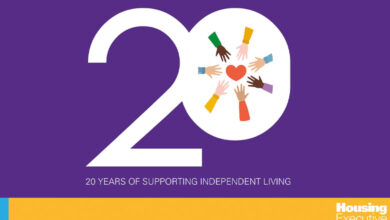Green agenda
 Newly appointed Chair of the Assembly’s Environment Committee, Cathal Boylan tells Meadhbh Monahan about its wide remit and how they are the busiest committee.
Newly appointed Chair of the Assembly’s Environment Committee, Cathal Boylan tells Meadhbh Monahan about its wide remit and how they are the busiest committee.
Growing up in south Armagh among the drumlins and forts, bird watching with his brother, fishing, and working on the farm – Cathal Boylan acquired a passion for the environment at an early age.
Being planning spokesman for Sinn Féin has also enhanced his “keen interest” in the environment and through his position as Environment Committee Chair he wants to ensure that there is “balanced and appropriate use of land”.
Boylan, who has been a member of the committee since it was formed in 2007, recently took over chair from the SDLP’s Dolores Kelly after she was moved to the employment chair during a reshuffle of Assembly posts brought about by the devolution of policing and justice.
The committee’s main role, along with scrutinising proposed legislation and advising and assisting the Minister, is “looking at new and innovative ways to address climate change and the environment.” Its wide remit covers road safety, the natural environment, planning and local government.
Priorities
Boylan contends that the Environment Committee is “the busiest in terms of primary legislation.”
Indeed they have seven Bills on their agenda, including those on wildlife and the natural environment, waste and contaminated land, high hedges, and clean neighbourhoods.
On the Clean Neighbourhoods Bill, Boylan says: “This will impact the rate payers so it is vitally important that we do a good scrutiny of that bill.”
Equally, he states that the committee must do their utmost to get the high hedges legislation rolled out because “there have been a lot of complaints to local representatives about high and nuisance hedges.”
Boylan’s first occasion in the spotlight as Chair was last month when it recommended that the Wildlife Bill should be much stronger by implementing a total ban on the use of snares while hunting hares. It also suggested that the department report on its implementation of a biodiversity strategy at least every five years, rather than ‘from time to time’ as proposed in the draft Bill. Commenting at the time Boylan said: “The committee received many briefings and took evidence from a wide range of stakeholders and formed the view that some of the measures in the department’s draft Bill do not go far enough. It is [our] view that by further strengthening the Bill we will be better placed to protect our wildlife and environment for generations to come.”
In addition to these laws, the committee is formulating its response to Edwin Poots’ road safety strategy (page 30).
“We are very keen on road safety and the committee itself has shown an interest in that area,” Boylan emphasises.
In an effort to make rural roads safer and to “bring the work of the Assembly to the public”, the committee will hold a networking event at the Balmoral Show this month, organised with the PSNI and the Department for Regional Development.
The Review of Public Administration is
also high on the committee’s agenda, with its implications for local government. Members are currently examining consultation responses to a private member’s bill brought by Dawn Purvis to end ‘double-jobbing’. The Local Government (Disqualification) (Amendment) Bill passed its second stage on 8 March. If passed, it will amend the 1972 Local Government Act, to disqualify members of the Northern Ireland Assembly from being elected as councillors.
Achievements
“High level scrutiny” was carried out in the climate chance inquiry, which Boylan believes is the committee’s biggest achievement to date.
“It was a good piece of work that the committee enjoyed undertaking,” he reflects. The inquiry, which recommended improvements on government environment policy, lasted from January to November 2009 and “the committee left no stone unturned”.
Recommendations include developing Northern Ireland-specific climate change targets. The region’s targets are currently set by the UK Climate Change Committee but the Environment Committee thinks that localised targets would have a greater impact.
The report also advocates a new planning policy statement for climate change, which Boylan notes is an issue close to his heart.
A plastic bag levy is suggested and incidentally, Boylan’s party and committee colleague Daithí McKay brought a draft Bill, aiming to reduce the number of bags in circulation by charging 15 pence each, to the committee on the day the interview. This will now go to consultation.
The Green New Deal – which was proposed locally by a range of bodies including CBI, ICTU and Friends of the Earth in June 2009 – should be progressed as a matter of urgency across all relevant government departments, according to the report. The committee is currently waiting on the Minister’s response.
Another achievement, according to Boylan, was the Taxis Act 2008. “We went through 17 weeks of presentations. It was a good piece of work that is starting to impact on the ground now with regulations and licensing,” Boylan states. He also points to the Goods Vehicles Act 2010 which includes road safety as a “key element.”
Reflecting on the overall importance of the committee’s work, Boylan says: “When you sit up here [Stormont] and you’re reading through legislation or you’re looking at a draft Bill, you have to look at how that impacts on the ground. I think the stakeholder events that we do – inviting people in and hearing their views – that’s part of the achievement of the committee.”
Among the committee’s memorable visits was to the North/South Interconnector site in Armagh, which Boylan admits is “a favourite” topic of his. They have recently been to the Giant’s Causeway for discussions on a visitor centre; Derrygonnelly Field Centre in Fermanagh for discussions on the Wildlife Bill; and Castlewellan County Park as part of the RSPB’s red kite reintroduction project.
Relations with the department are productive and “there’s an acceptance now that we have our own powers and it’s
much better than before devolution,” Boylan explains.
On whether the committee can be considered as party-political, Boylan says that most of the members have always been very cordial and frank.
He adds: “You have the natural tensions in the committee and your own party politics sometimes comes out but I think most of the members have the general interest in making the committee work, especially if you invite someone up on a single issue. [In that case] we try to do our best, jointly, to give people a voice.”
He praises the committee as being “very constructive”, even organising extra meetings in order to deal with the large remit they have to cover.
The recession has had an impact on its work in that they are hearing from more groups who have had their funding from the department cut. “There’s been a tightening of belts around all sectors. We have received various correspondences and we will certainly give them an opportunity to meet the committee and will try to give them an opportunity to explain what their problems are. We will ask questions on their behalf like we always do; that’s the best we can do.”
Influence
Commenting on how influential the committee is on dealing with climate change, Boylan believes that individual members know that they should recycle and conserve energy in order to cut emissions and target climate change. However, when it comes to creating policy, that’s down to the individual political parties.
“I can only speak on behalf of my own party; we have the environment at the top of the list,” he says.
Boylan concludes: “The DoE committee is the busiest committee in terms of primary legislation. It is very hard working but I am enjoying the challenge. The key element is doing what we can for general public in terms of legislation.”
Committee members
· Chair: Cathal Boylan (SF)
· Deputy Chair: Dominic Bradley (SDLP)
· Roy Beggs (UUP)
· Jonathan Bell (DUP)
· John Dallat (SDLP)
· Danny Kinahan (UUP)
· Ian McCrea (DUP)
· Daithi McKay (SF)
· Alastair Ross (DUP)
· Peter Weir (DUP)
· Brian Wilson (Green)
Climate change inquiry
Currently awaiting the Minister’s response, the climate change inquiry recommends that the Executive should develop its own climate change implementation strategy as a matter of urgency. This would include climate change targets and Northern Ireland making a fair and proportionate contribution to the UK greenhouse gas emission reduction targets. In addition, the committee called for waste reduction schemes and a levy for single use carrier bags. The report states that there should be greater co-operation on climate change between Northern Ireland and the Republic of Ireland and a new planning policy statement for climate change should be developed and produced before the end of this Assembly.





